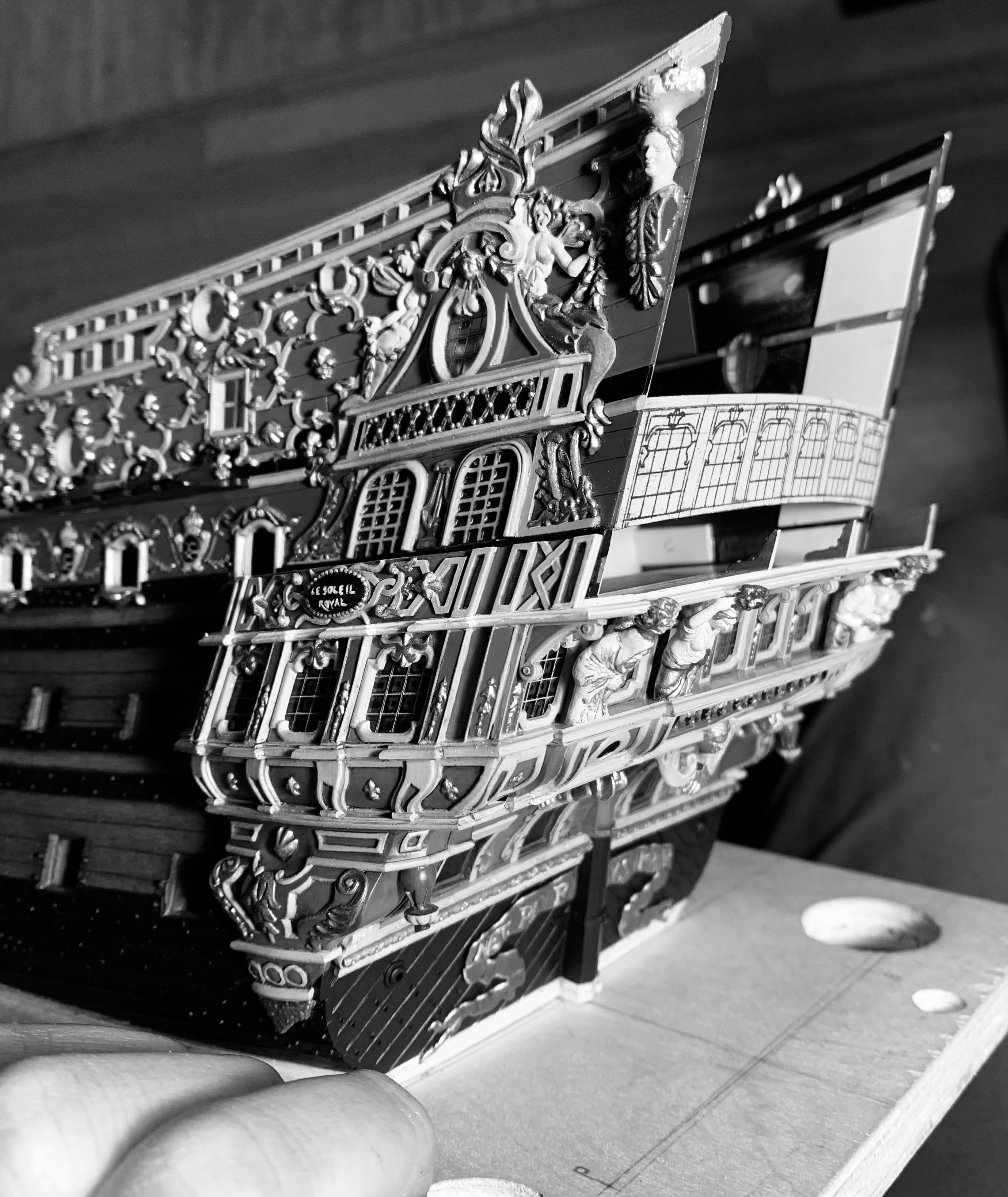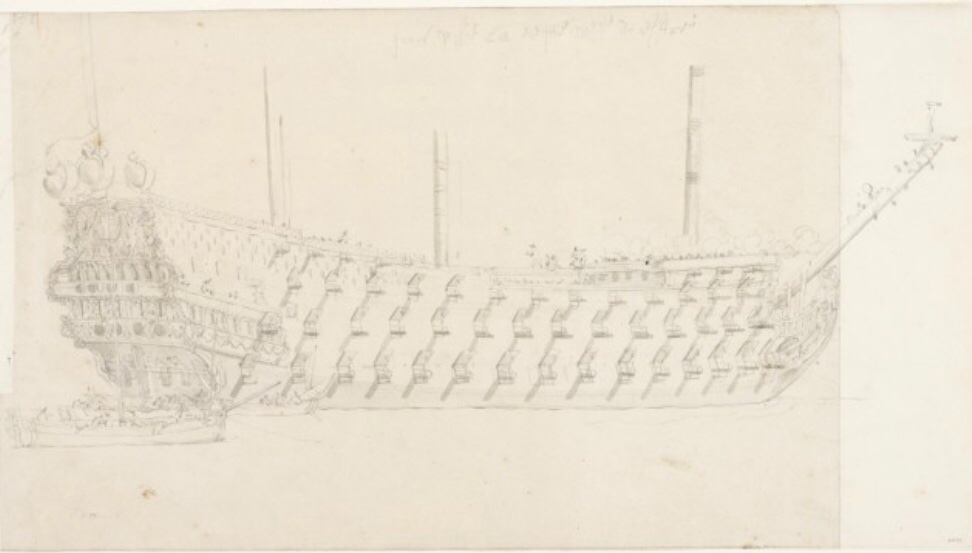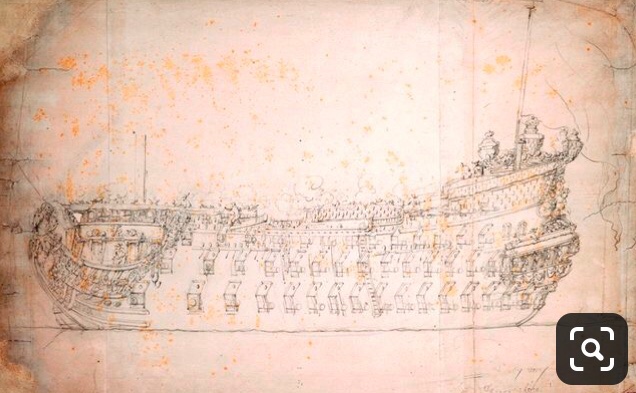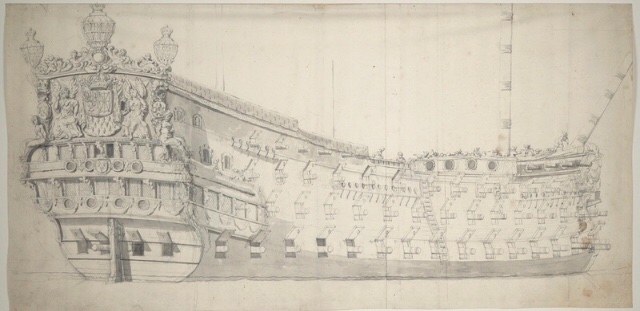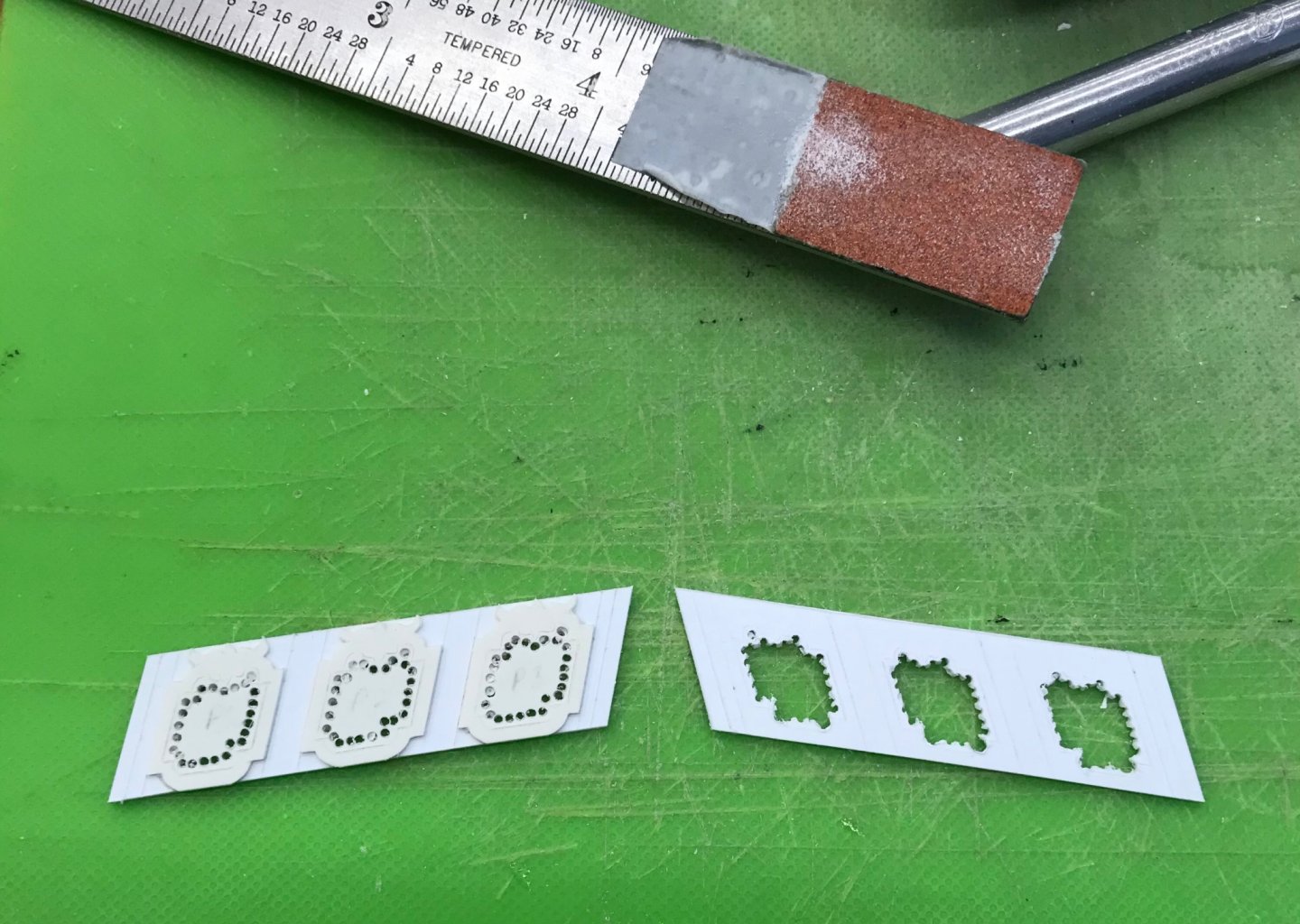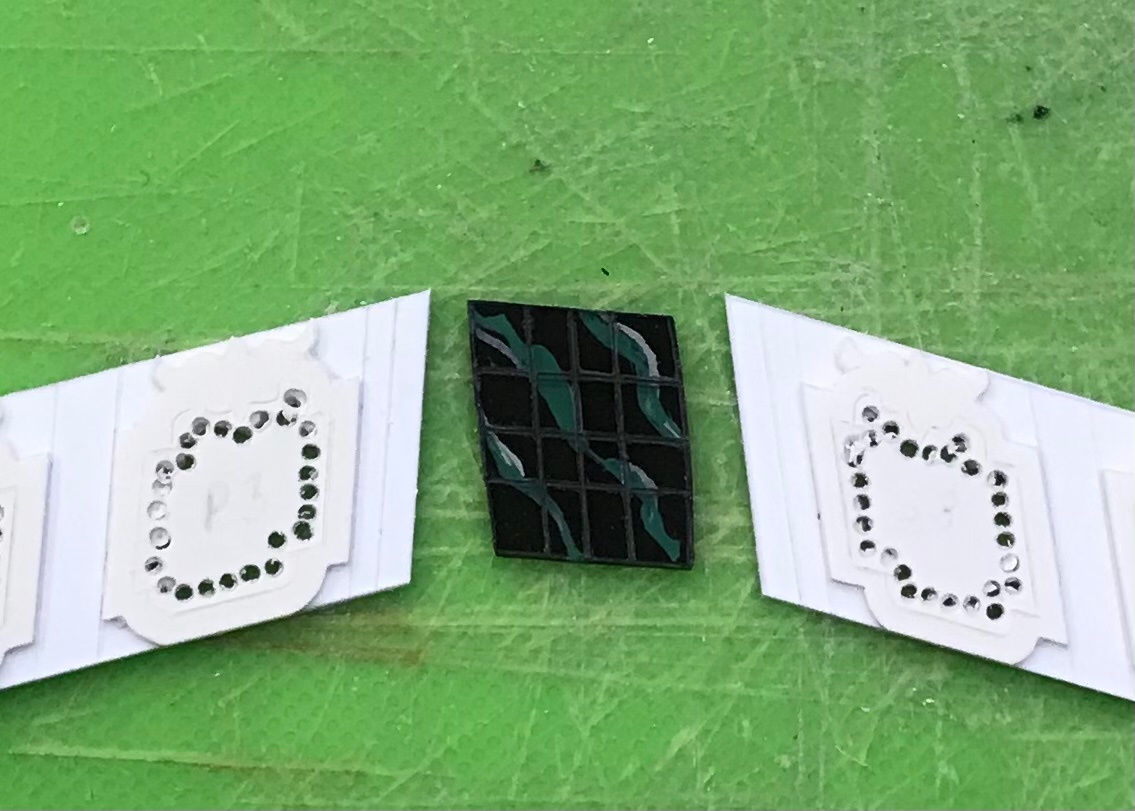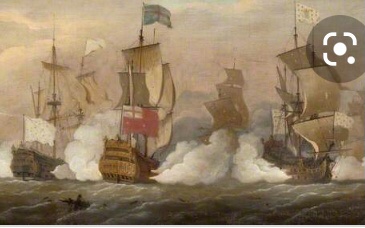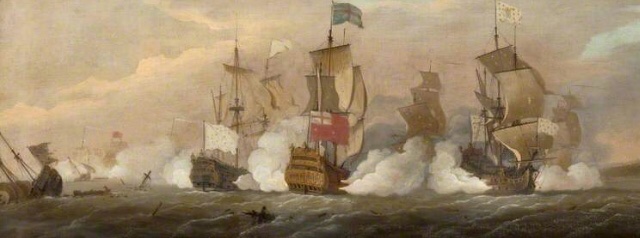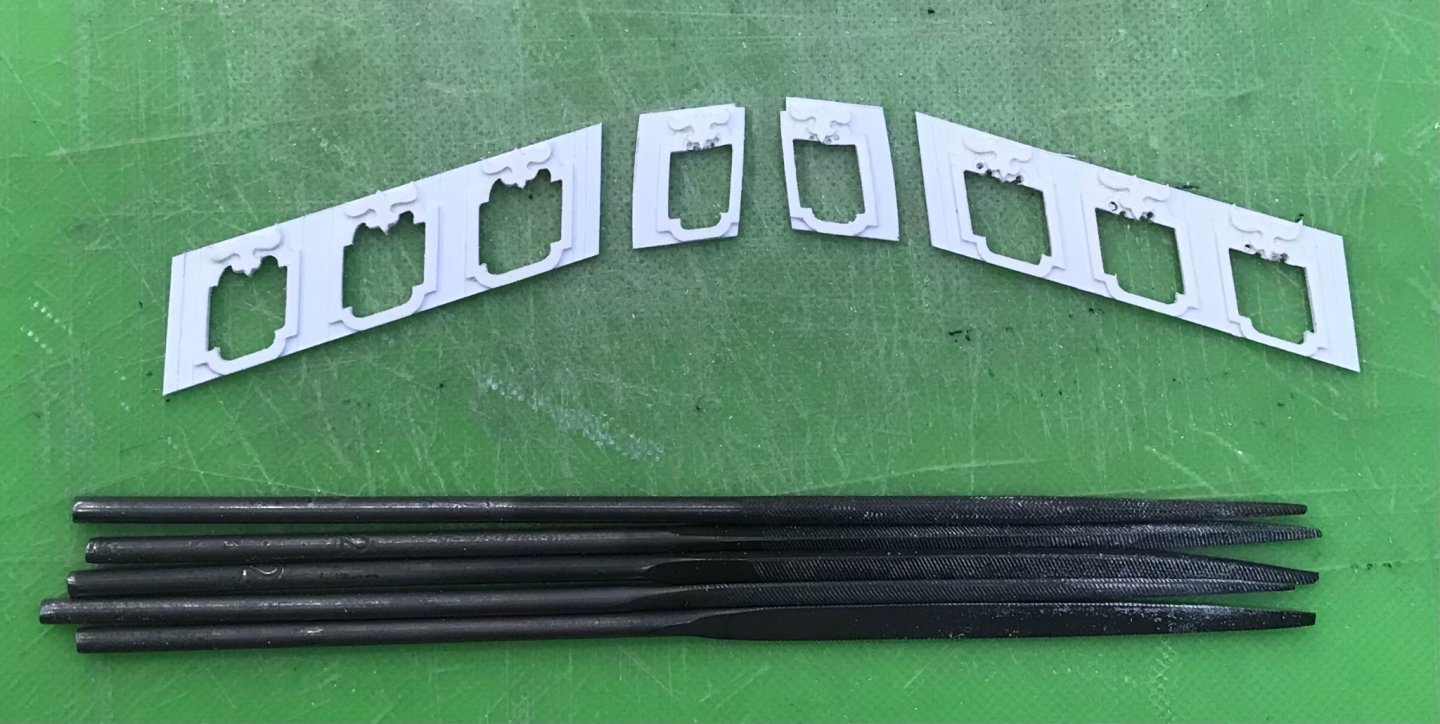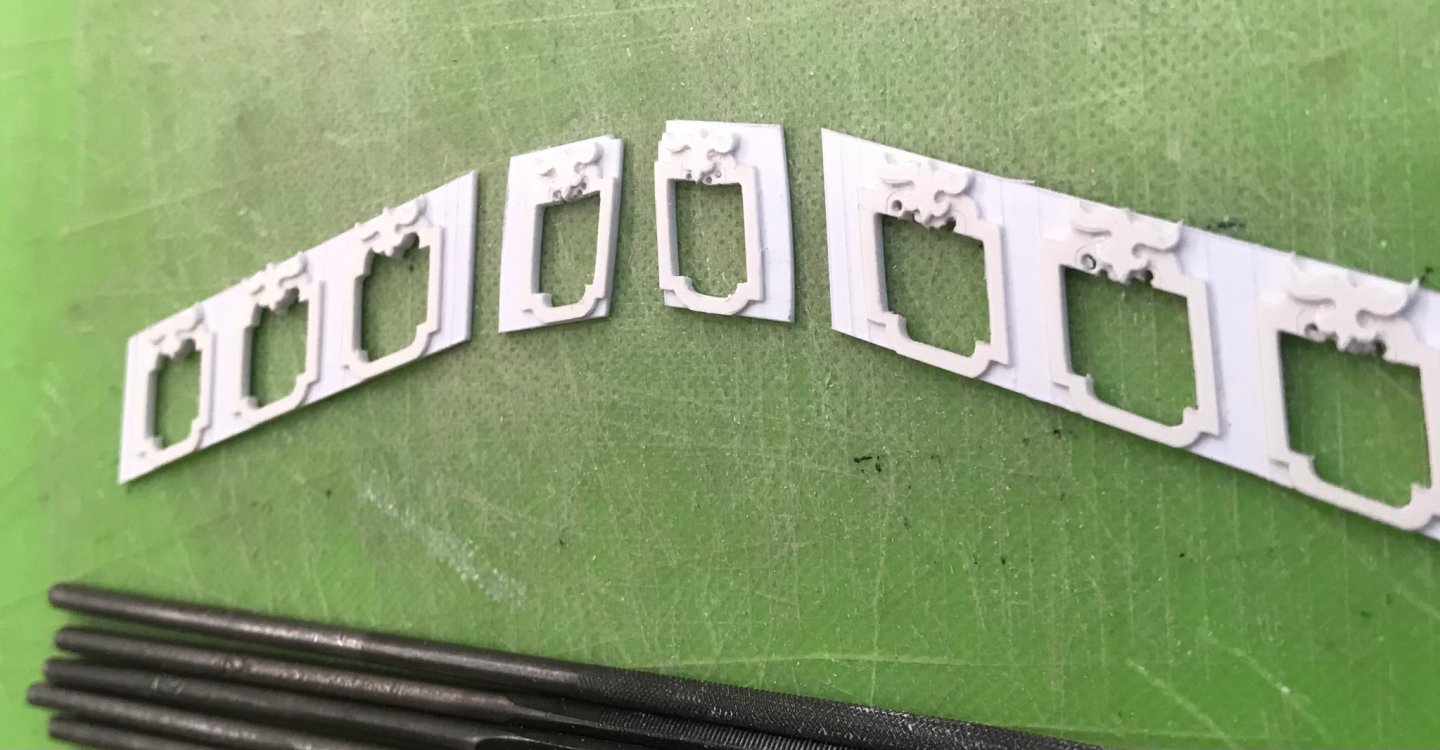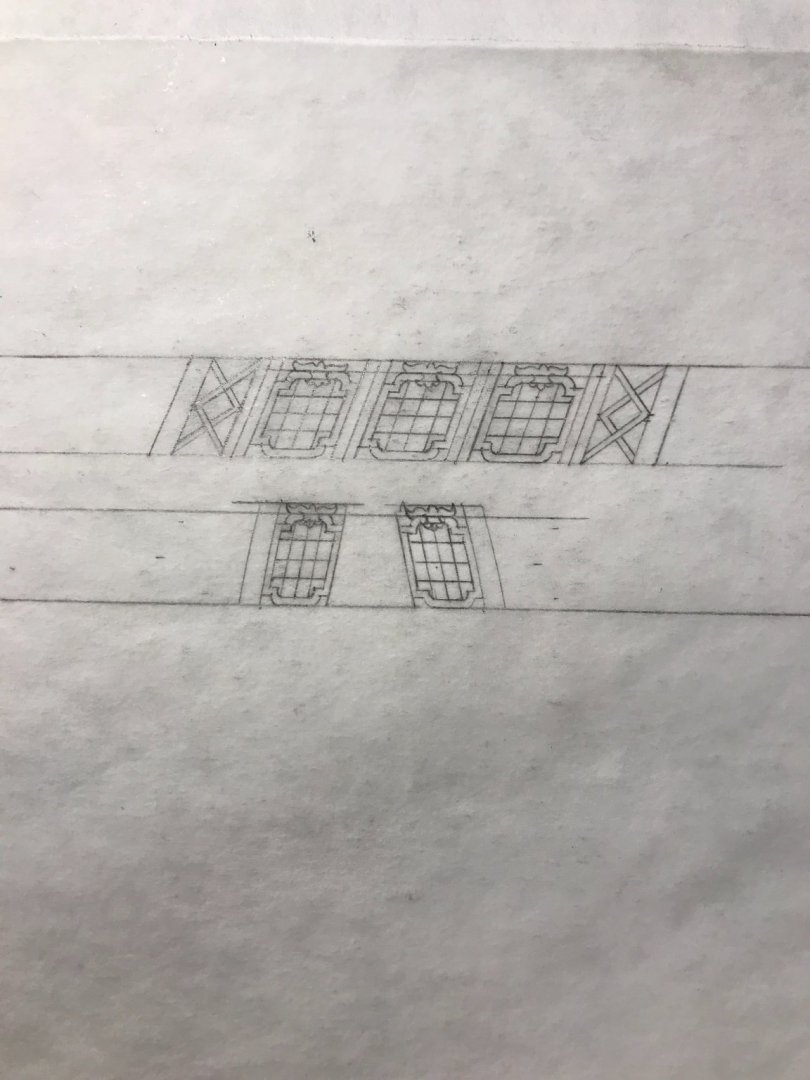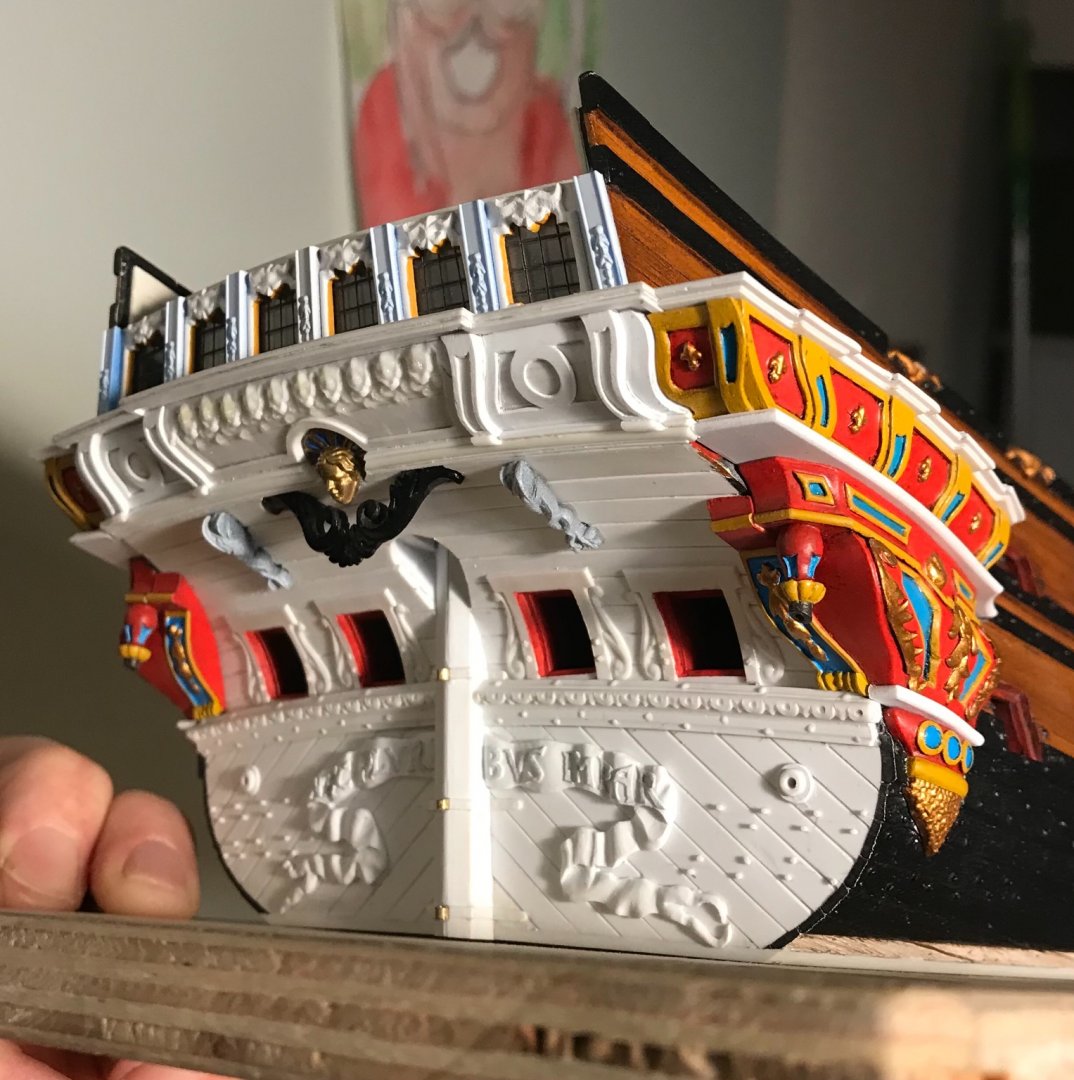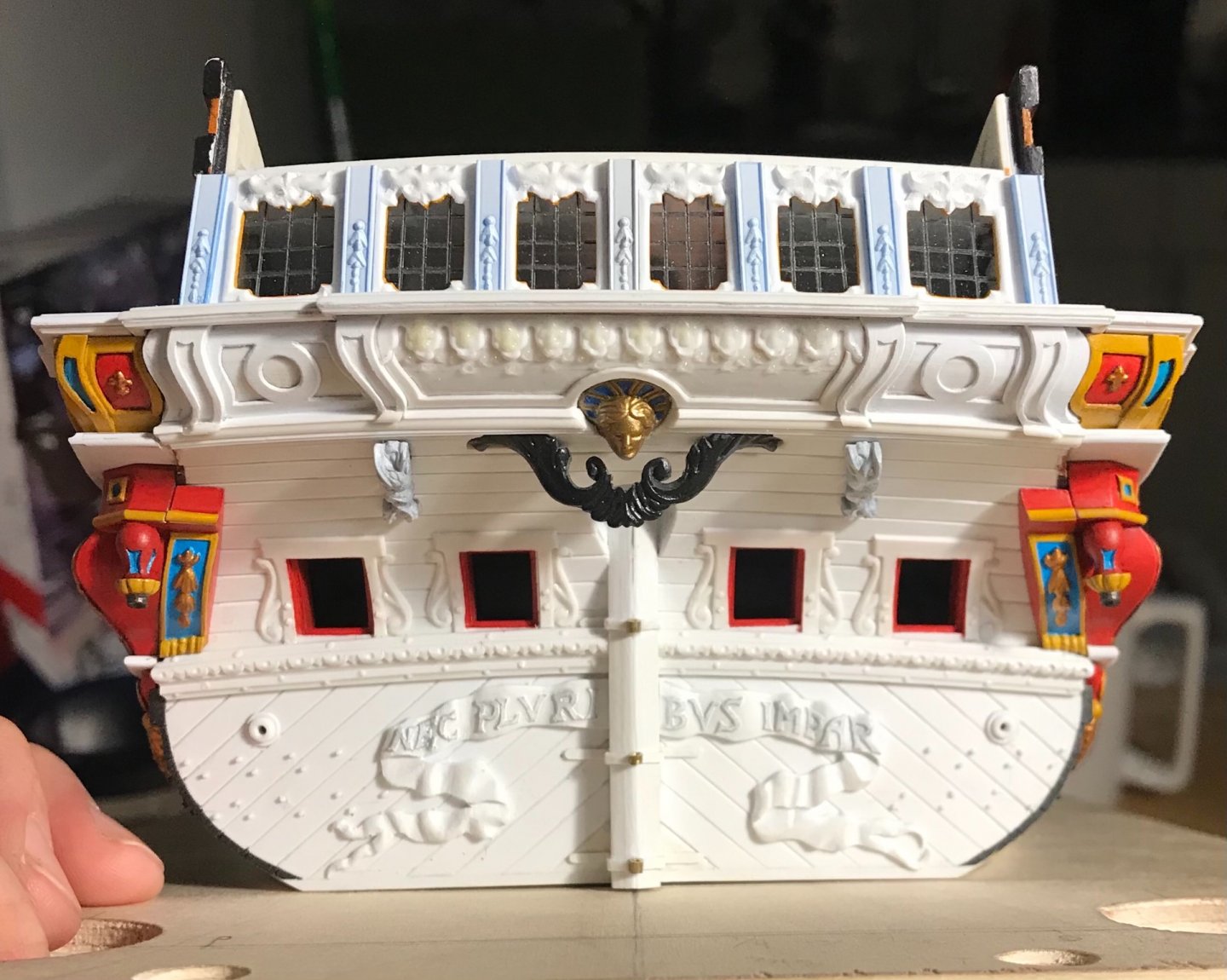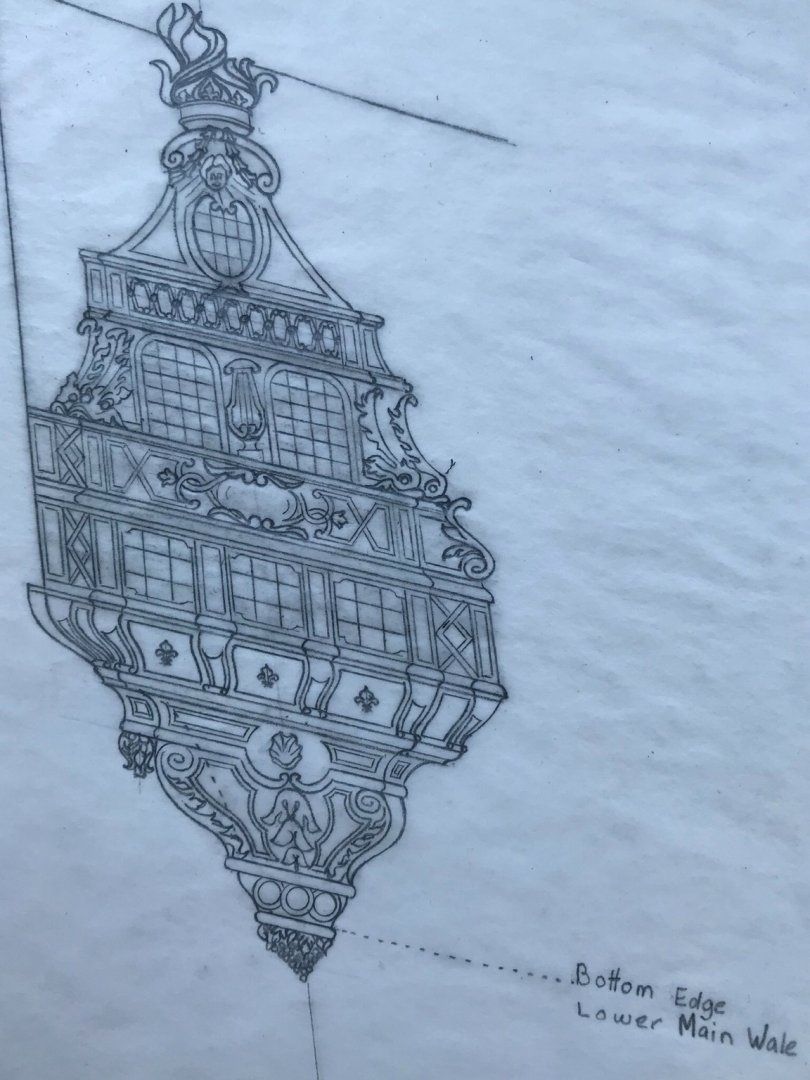-
Posts
3,292 -
Joined
-
Last visited
Content Type
Profiles
Forums
Gallery
Events
Everything posted by Hubac's Historian
-
Great prep and early construction progress, Tom! In thinking about this method, I was wondering about grain selection for the various lifts - particularly the bottom lift. Most of the poplar stock you have shown appears to be rift-sawn. I wonder, though, whether it may he particularly advantageous to use quarter-sawn stock for the first lift because you won’t be cutting out the middle. Do you find that the relative stability of poplar negates this consideration?
-
CCoyle could not have said it better.
- 1,035 replies
-
- royal katherine
- ship of the line
-
(and 1 more)
Tagged with:
-
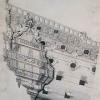
Roter Löwe 1597 by Ondras71
Hubac's Historian replied to Ondras71's topic in - Build logs for subjects built 1501 - 1750
This is just some beautiful work you are doing, here, Ondras. -
WOW -really impressive scale work, Mike! I am always impressed when modelers go this small. I will be following with great interest. You are doing an amazing job, here!
- 179 replies
-
- hatsuzakura
- pit road
-
(and 2 more)
Tagged with:
-
Hi George - do you have a pic of the Paris model that shows the circumstance you describe? To have a working capstan on the forecastle deck does seem strange to me, as well, for a French ship of any rate or time. My knowledge base is limited, though. Any Boudriot references, anyone?
- 22 replies
-
- royal louis
- heller
-
(and 1 more)
Tagged with:
-
That is just pure magic! I have enjoyed watching every step of this project come together. And now, if I may propose a new project deserving of your particular talents: La Reine of 1668, as drawn here in 1672. Nobody can capture the elegant magnificence of French Baroque ornamentation quite like you. Just something to consider🙃😉
- 1,035 replies
-
- royal katherine
- ship of the line
-
(and 1 more)
Tagged with:
-
T_C, a great idea should always be acknowledged. This one, I shall not soon forget. I have to say that, while the making of window frames is labor intensive, it is an enjoyable process. One cause for satisfaction is that the original drawing is quite a mess, in this section: The reduction of windows from five to three just really de-clutters the whole design. Also, ensuring that the top and bottom rails of the windows are parallel improve the overall sense of balance. A brief montage: This is one approximate idea for doing a stylized false window. It isn’t exactly what I had in mind, but it is an idea worth playing around with a little. I’ll make some extra panes to experiment with a few different looks. By including the top-rail ornament, I ensure that there is consistency with the corresponding stern windows. If I had made simple frames, without these ornaments, the windows would appear too tall. Another nice thing is that, for a change, I have a really clear idea what the underlying structure of these windows will be. Constructing them should be relatively straight-forward. Anyway, it is a work in-process. I tried to get a decent zoom into this portrait of the Battle of Barfleur by Peter Monamy: The well-documented stern of HMS Britannia is easily recognizable. There is a strong likelihood that the French ship firing on her from the starboard broadside is Soleil Royal. Like all potentially credible portraits of SR (Monamy is in the upper echelon of period marine artists), these thumbs are too small to read for detail. This portrait may still exist in the Glasgow collection, though. I will have to send an inquiry. ’Twas a dark day for America, yesterday. Hopefully, more sane days are on their way. Thank you for your likes, comments and looking in!
- 2,696 replies
-
- heller
- soleil royal
-
(and 9 more)
Tagged with:
-
That parquet floor rescue must have been nerve-wracking! I can feel it in my guts just imagining it. This is beautiful progress, Mike.
- 607 replies
-
- winchelsea
- Syren Ship Model Company
-
(and 1 more)
Tagged with:
-
John, she's coming along beautifully, so far. I really like the additions and upgrades that you have made - particularly the guns; the scale of the Heller stock guns does not capture the heft of the real thing, although their detailing is very nice. I also like what you have done with the figurehead and appreciate your research into period artistic conventions of the 17th C. Really beautiful work. I'm sorry that I can't be much help about the rigging, as I haven't worked through many of those problems yet, myself, beyond the main deck sheet and tack leads. Popeye2Sea, though, is an excellent resource for really understanding the why and where-for of rigging practice. I will be very interested to see what you do with the upper bulwarks. Happy New Year, Marc
-
I’m very sorry to hear about the passing of your husband, Doris. This has been a very difficult year for you. In the face if these challenges, though, you have done a spectacular job with your Katherine - simply one of the best models I have ever seen.
- 1,035 replies
-
- royal katherine
- ship of the line
-
(and 1 more)
Tagged with:
-
Wow, Marsalv - what a talent you are! I'm just completely blown away by all of it. This is truly inspiring stuff! I particularly like your cut-aways. I have never seen anyone else approach it in quite this way; you seem to have maximized the long-view through the ship, in places, while adding a uniquely a-symmetrical artistic flair to the openings. It is all just so good. The lead-lined manger is just perfection, from my point of view.
- 589 replies
-
- le gros ventre
- cargo
-
(and 1 more)
Tagged with:
-
Well, I won't miss out on this work of art! I'm a little late to the party, but there still seems to be plenty of build ahead. All of the smallest attention to detail is so lovely and perfectly rendered. You're giving ArchJofo a run for his money in the Chandlery.
- 589 replies
-
- le gros ventre
- cargo
-
(and 1 more)
Tagged with:
-
This is truly a magnificent effort - well deserving of the gold it has won and the recognition it will garner, in the future. I'm sorry I missed this one!
-
‘Just a quick update. Corbels are painted and in-place. Yes, I will fill and fair that joint at the top 😉: I have the port side and stern quarter windows drafted: One of the problems/complaints, concerning the Berain/Vary drawing is the sometimes confounding inconsistencies between the irrefutable Berain stern drawing and the quarter drawing. Because the, now, concrete reference points of the model enable me to make reliable drawings for this next phase of the build, I decided to address these inconsistencies. The reality of the kit meant that the actual space available for these windows is taller than what I initially drew: One way to effectively deal with that real height discrepancy, while also helping with consistency, was to include the same window ornament, along the top stile, as seen on the stern. The fact that I have reduced these QG windows, in number, from 5 to 3 helps with the overall width to height ratio. This is different from what Berain/Vary drew, but more consistent with better understood examples of the time (SP, 1693), while also paying respect to the hard realities of the kit. HAPPY NEW YEAR!
- 2,696 replies
-
- heller
- soleil royal
-
(and 9 more)
Tagged with:
-
I understand your mentality, Kevin, but I think you are being to hard on yourself. The stairs and entry port look incredible from my seat in the gallery. I think the best way to tackle the balusters is to black-in the ground and then dry brush the yellow. Even if it takes a few passes, you will get there. Dry brushing is less daunting than it seems.
-
Thank you so much, Mark! I really appreciate that you have stuck with me from the start of this project. It has been a slow build! As I think we all are, I’m really hoping for a better 2021. It may be a rough start, but I think we’ll get there. I wish you health and happiness in the coming year, Mark! ATB, M
- 2,696 replies
-
- heller
- soleil royal
-
(and 9 more)
Tagged with:
About us
Modelshipworld - Advancing Ship Modeling through Research
SSL Secured
Your security is important for us so this Website is SSL-Secured
NRG Mailing Address
Nautical Research Guild
237 South Lincoln Street
Westmont IL, 60559-1917
Model Ship World ® and the MSW logo are Registered Trademarks, and belong to the Nautical Research Guild (United States Patent and Trademark Office: No. 6,929,264 & No. 6,929,274, registered Dec. 20, 2022)
Helpful Links
About the NRG
If you enjoy building ship models that are historically accurate as well as beautiful, then The Nautical Research Guild (NRG) is just right for you.
The Guild is a non-profit educational organization whose mission is to “Advance Ship Modeling Through Research”. We provide support to our members in their efforts to raise the quality of their model ships.
The Nautical Research Guild has published our world-renowned quarterly magazine, The Nautical Research Journal, since 1955. The pages of the Journal are full of articles by accomplished ship modelers who show you how they create those exquisite details on their models, and by maritime historians who show you the correct details to build. The Journal is available in both print and digital editions. Go to the NRG web site (www.thenrg.org) to download a complimentary digital copy of the Journal. The NRG also publishes plan sets, books and compilations of back issues of the Journal and the former Ships in Scale and Model Ship Builder magazines.

